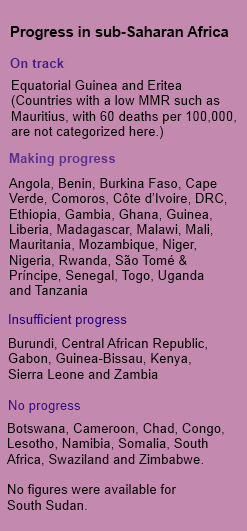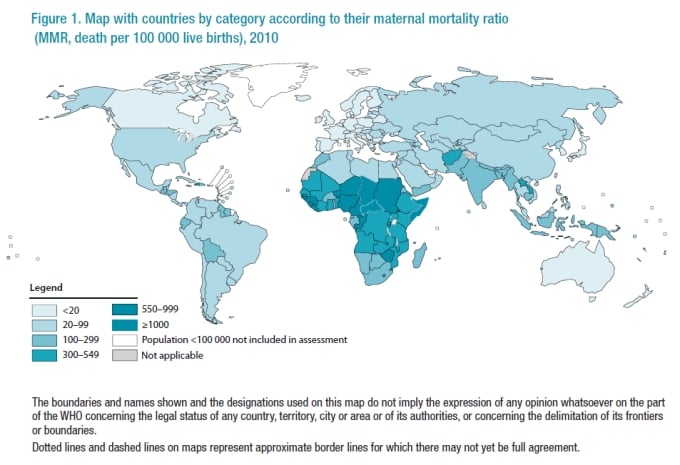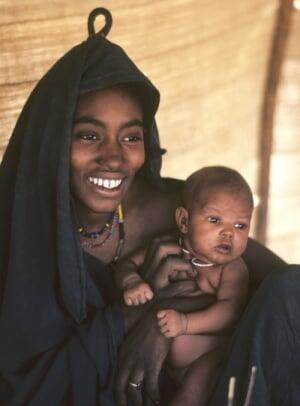The maternal death rate in sub-Saharan Africa has dropped by 41 per cent in 20 years. The 1990 rate of 850 deaths per 100,000 live births declined to a regional average of 500 deaths per 100,000 live births by 2010.
The new figures for 2010 were released yesterday in the report Trends in maternal mortality: 1990 to 2010 by WHO, UNICEF, UNFPA and The World Bank.
MMR is considered to be high if it is over 300 deaths per 100,000 live births, and extremely high if above 1000 deaths per 100,000 live births.
Success for Equatorial Guinea
Equatorial Guinea is one of 10 countries worldwide that has achieved MDG 5, by reducing it's maternal death rate by 81 per cent, from 1200 to 240 per 100,000 live births over 20 years.
Eritrea in line to achieve MDG 5
Eritrea is among the nine countries considered on track to achieve MDG 5 as it has had an average reduction of maternal deaths of 6.3 per cent over the 20 years (from 880 to 240 deaths per 100,000 live births).
No less than 24 of the 46 sub-Saharan countries have achieved a reduction of more than 40 per cent in maternal deaths since 1990. They are Equatorial Guinea (81 per cent), Eritrea (73 per cent), Ethiopia (64 per cent), Rwanda (63 per cent), Angola and Madagascar (62 per cent), Cape Verde (61 per cent), Malawi (59 per cent), Burkina Faso (57 per cent), Benin (55 per cent), São Tomé & Príncipe (54 per cent), Niger (53 per cent), Mali and Togo (51 per cent), Guinea and Gambia (50 per cent), Tanzania and Uganda (47 per cent), Mozambique (46 per cent), Senegal (45 per cent), Côte d'Ivoire (43 per cent), DRC (42 per cent), Nigeria (41 per cent) and Ghana (40 per cent).
More good news is that while five countries in sub-Saharan Africa showed an increase in maternal deaths from 2000 to 2005 due to HIV (they are Botswana, Lesotho, Namibia, South Africa and Swaziland), their rates are all in decline once more due to the increasing availability of antiretroviral treatment.

All countries have been rated according to their progress towards improving maternal health, as either on track, making progress, insufficient progress or no progress (see graphic adjacent).
Sub-Saharan Africa in context
The report shows that the maternal mortality ratio (MMR) for developing regions is 15 times higher than developed regions. Sub-Saharan Africa accounts for 56 per cent of global maternal deaths. The lowest rate of 37 deaths per 100,000 live births occurs in Eastern Asia. At the country level, Nigeria accounts for 14 per cent (40,000) of global deaths, behind India at 19 per cent (making one third of the global total). However, Nigeria's MMR has shown a 41 per cent improvement.
In 2010, 40 countries had a high MMR and two had an extremely high MMR. One of the latter is Chad, which has shown a 15 per cent increase on its 1990s figure of 920 to 1100 in 2010.
Apart from Cameroon, which recorded a 3 per cent increase in its maternal death rate (from 670 to 690), the other eight highest MMR countries in the region have reduced their maternal death rates, as follows:
- Burundi: 26 per cent decline (from 1100 to 800)
- Central African Republic: four per cent decline (from 930 to 890)
- Guinea-Bissau: 29 per cent decline (from 1100 to 790)
- Liberia: decrease of 38 per cent (1200 to 770)
- Nigeria: decline of 41 per cent (1100 to 630)
- Sierra Leone: 30 per cent drop (from 1300 to 890).
Sub-Saharan Africa has the highest proportion of maternal deaths due to HIV, at 10 per cent. Of the 19,000 maternal deaths due to HIV globally, sub-Saharan Africa registered 17,000 (91 per cent).
Over 20 years, the past five years has seen the biggest decline in women dying in the region from pregnancy or birth-related complications:
- From 1990 to 1995, the maternal death rate dropped slightly from 850 to 820 deaths per 100,000 live births.
- From 1995 to 2000 the decrease was greater, from 820 to 740 deaths per 100,000 live births.
- From 2000 to 2005, the rate reduced by a further 110 per 100,000 live births - from 740 to 630 deaths per 100,000 live births.
- The biggest drop was recorded from 2005 to 2010 - from 630 to 500 deaths per 100,000 live births.
Hughes Kone, Regional Communications Adviser, UNFPA Dakar: kone@unfpa.org
Adebayo Fayoyin, Regional Communications Adviser, UNFPA Johannesburg: fayoyin@unfpa.org






